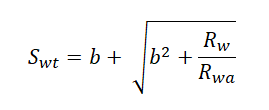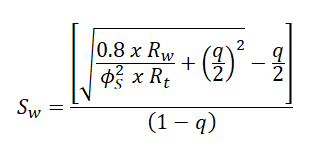Bibliography
- Archie, G. E. (1942). The electrical resistivity log as an aid in determining some reservoir characteristics. Transactions of the AIME, 146(01), 54-62.
- Asquith, G. & D. Krygowski, 2004, Basic Well Log Analysis, AAPG Methods in Exploration Series, No. 16, Second Edition, American Association of Petroleum Geologists (AAPG).
- Atlas, D. (1974). Log review I. Dresser Atlas Division, Dresser Industries.
- Clavier, C., Hoyle, W., & Meunier, D. (1971). Quantitative interpretation of thermal neutron decay time logs: part I. Fundamentals and techniques. Journal of Petroleum Technology, 23(06), 743-755.
- Coates, G. R., & Dumanoir, J. L. (1973, January). A new approach to improved log-derived permeability. In SPWLA 14th Annual Logging Symposium. Society of Petrophysicists and Well-Log Analysts.
- Dewan, J. T. (1983). Essentials of modern open-hole log interpretation. PennWell Books.
- Fertl, W. H. (1975, January). Shaly sand analysis in development wells. In SPWLA 16th Annual Logging Symposium. Society of Petrophysicists and Well-Log Analysts.
- Larionov, V. V. (1969). Borehole radiometry. Nedra, Moscow, 127.
- Raymer, L. L., Hunt, E. R., & Gardner, J. S. (1980, January). An improved sonic transit time-to-porosity transform. In SPWLA 21st annual logging symposium. Society of Petrophysicists and Well-Log Analysts.
- Schlumberger, A. (1975). guide to Wellsite interpretation of the Gulf Coast. Schlumberger Well Services, Houston.
- Simandoux, P. (1963). Dielectric measurements on porous media, application to the measurements of water saturation: study of behavior of argillaceous formations. Revue de l’Institut Francais du Petrol, 18(supplementary issue), 93-215.
- Stieber, S. J. (1970, January). Pulsed Neutron Capture Log Evaluation-Louisiana Gulf Coast. In Fall Meeting of the Society of Petroleum Engineers of AIME. Society of Petroleum Engineers.
- Timur, A. (1968, January). An investigation of permeability, porosity, and residual water saturation relationships. In SPWLA 9th annual logging symposium. Society of Petrophysicists and Well-Log Analysts.
- Wyllie, M. R. J., & Rose, W. D. (1950). Some theoretical considerations related to the quantitative evaluation of the physical characteristics of reservoir rock from electrical log data. Journal of Petroleum Technology, 2(04), 105-118.
- Wyllie, M. R. J., Gregory, A. R., & Gardner, G. H. F. (1958). An experimental investigation of factors affecting elastic wave velocities in porous media. Geophysics, 23(3), 459-493.
















